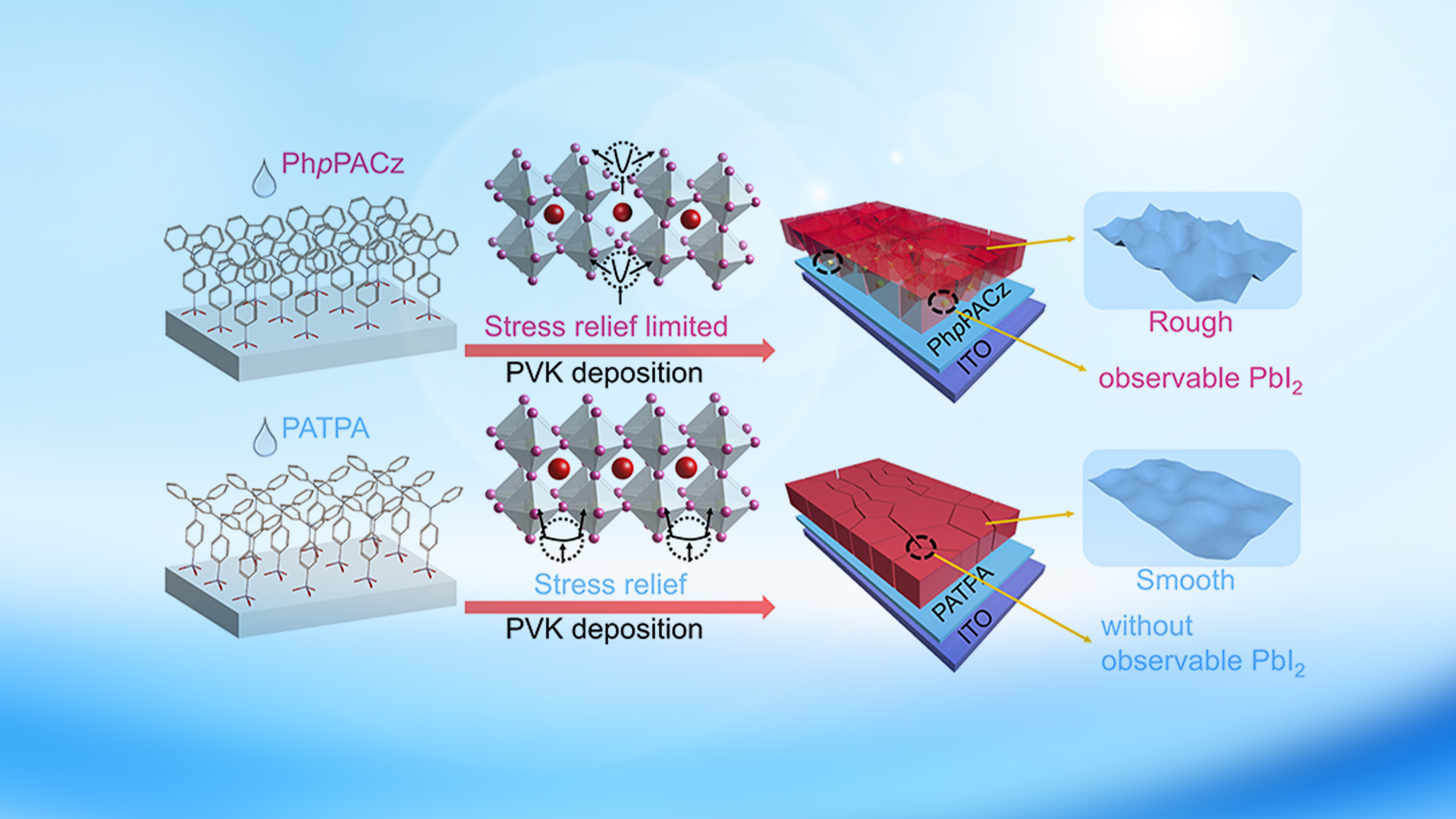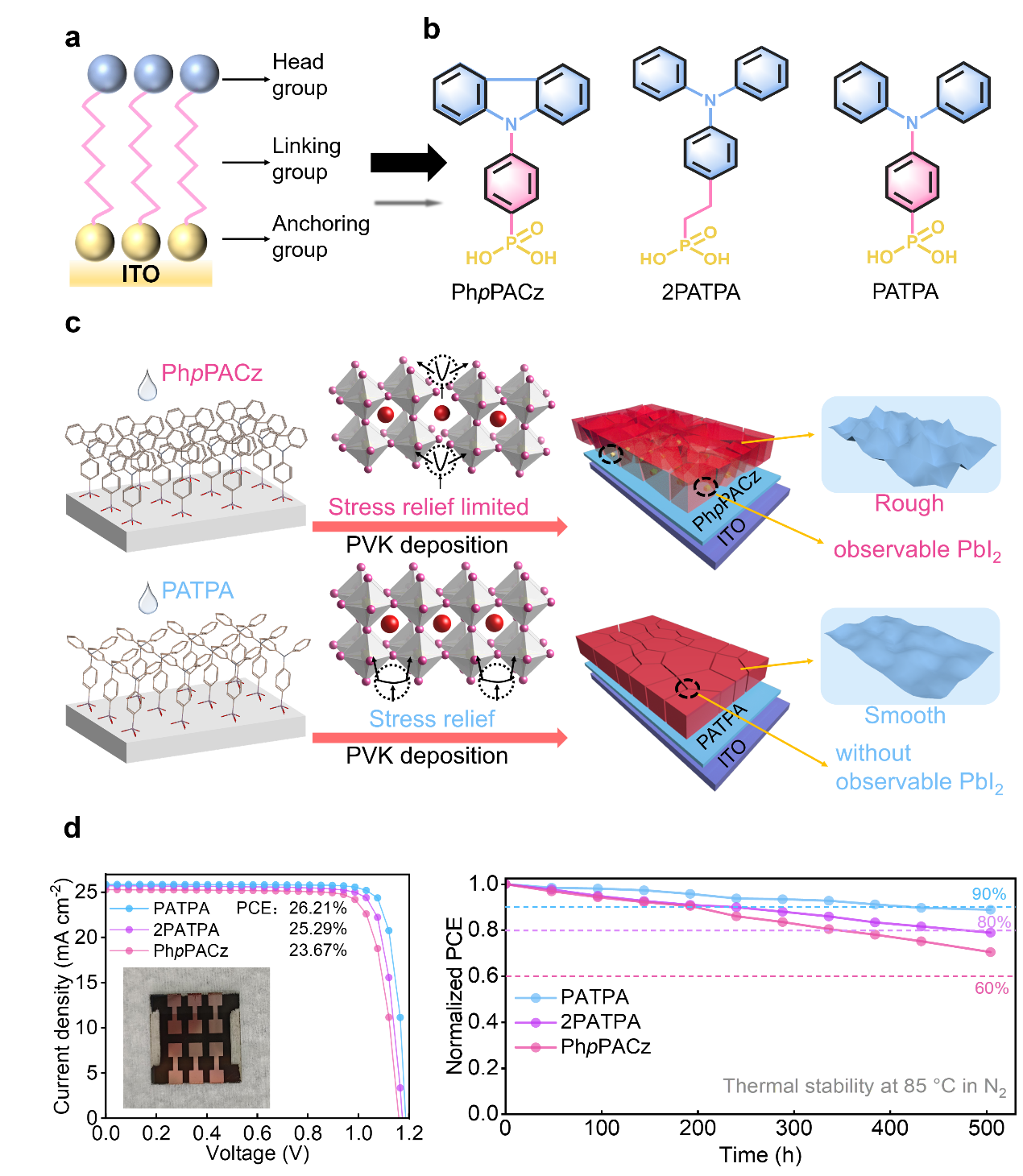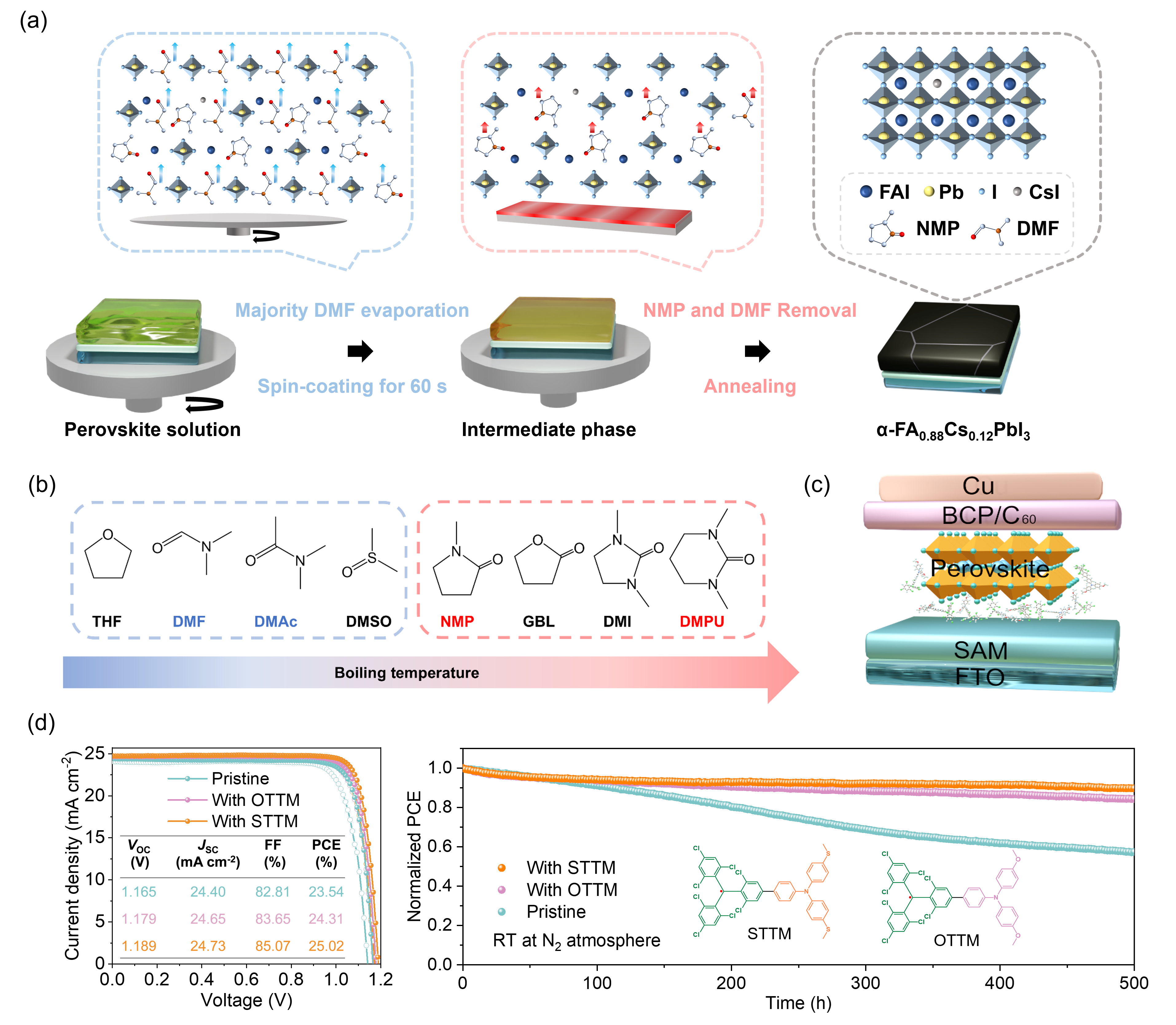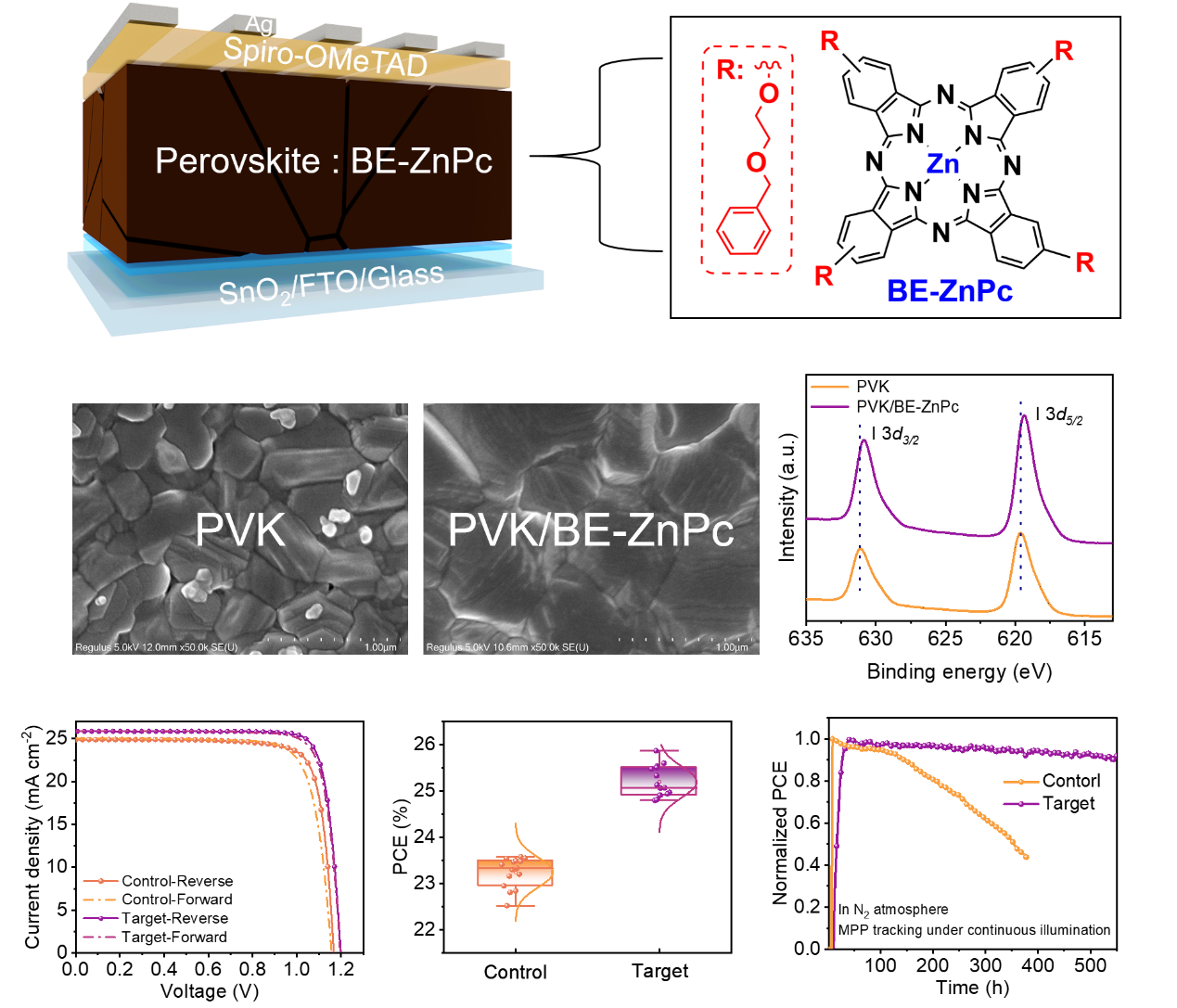Perovskite materials demonstrate remarkable optoelectronic characteristics, including exceptionally high light absorption coefficients and extended carrier diffusion lengths. In photovoltaic applications, these materials have achieved laboratory device efficiencies exceeding 27% for single-junction configurations, surpassing conventional crystalline silicon solar cells and significantly outperforming traditional thin-film technologies. This outstanding performance highlights their transformative potential to disrupt the current photovoltaic landscape.
The unique combination of high conversion efficiency and low manufacturing costs positions perovskites to accelerate the realization of grid parity for solar energy. Consequently, they offer a highly efficient and economically viable clean energy solution that can materially contribute to global carbon neutrality objectives while substantially increasing the share of renewables in the global energy portfolio.
Professor Zong-Xiang Xu’s research group from the Department of Chemistry, College of Science at the Southern University of Science and Technology (SUSTech) has recently achieved a series of breakthroughs in the field of perovskite solar cells (PSCs). They have published three academic papers in renowned journals such as Nature Communications, Advanced Energy Materials, and Advanced Functional Materials.

New molecular design unlocks high efficiency in perovskite photovoltaics
Professor Zong-Xiang Xu’s group designed and developed multiple novel self-assembly (SAM) hole-transport materials that effectively improve the efficiency and stability of perovskite photovoltaic devices (Joule 2024, 8, 2123–2134; Nature Communications, 2025, 16, 86). Further exploration of new SAMs design methods is an important topic in the field of perovskite photovoltaics.
They proposed a SAM material design strategy that synergizes flexible head groups with rigid linking groups. Using (4-(diphenylamino)phenyl)phosphonic acid (PATPA) as a model molecule, they demonstrated that—compared to traditional materials such as (4-(9H-carbazol-9-yl)phenyl)phosphonic acid (2PATPA) and (4-(diphenylamino)phenethyl)phosphonic acid (PhpPACz)— the newly designed material generates a high-quality perovskite layer. This design achieves superior energy level alignment, improved hole extraction, and enhanced charge transport efficiency, while also effectively reducing non-radiative recombination. Devices based on (4-(diphenylamino)phenyl)phosphonic acid (PATPA) achieved power conversion efficiencies of 26.21% and 24.49% for small- (0.0715 cm2) and large-area (1 cm2) cells, respectively (Figure 1).
This work establishes an effective approach to SAM molecular design, providing a clear pathway for improving both the efficiency and long-term stability of PSCs through interface engineering.

Figure 1. Molecular structure of Bz-PhpPACz SAM molecule and PSC performance
Their related results, entitled “Flexibility Meets Rigidity: A Self-Assembled Monolayer Materials Strategy for Perovskite Solar Cells,” have been published in Nature Communications.
Dr. Geping Qu from City University of Hong Kong (CityUHK) and formerly of SUSTech, Ph.D. student Ying Qiao from The Hong Kong Polytechnic University and formerly of SUSTech, and joint Ph.D. student Siyuan Cai from SUSTech and The University of Hong Kong (HKU) are the co-first authors of this paper. The corresponding authors include Professor Zong-Xiang Xu, Professor Shi Chen from Henan University, and Professor Alex K.-Y. Jen from CityUHK.
Improved PSCs through green fabrication
The conventional fabrication of PSCs has historically relied on toxic solvents, such as dimethylformamide (DMF), N-methyl-2-pyrrolidone (NMP), and chlorobenzene, a practice that is now yielding to more sustainable and economically viable alternatives. The group developed a one-step, antisolvent-free methodology guided by the strategy of minimizing solvent toxicity and enhancing device performance. This method employs N,N-dimethylacetamide (DMAc) and N,N’-dimethylpropyleneurea (DMPU) as alternatives to DMF/NMP in antisolvent-free perovskite fabrication, along with ethanol for the hole transport layer. However, formamidinium (FA)-based perovskite films prepared via an antisolvent-free process often suffer from severe crystallization issues at the buried interface, which lacks rapid solvent removal and leads to a high concentration of defects such as uncoordinated Pb2+ ions.
To surmount this challenge, they devised a strategy that paired the use of mixed solvents (DMAc/DMPU) with the incorporation of stable radical additives, featuring Cl, methoxy, or methylthio groups. This approach effectively modulates the crystallization dynamics, diminishes defect concentrations, and enhances the extraction of charge carriers. Employing this method, an efficiency of 25.02% was achieved, along with exceptional operational stability (Figure 2). This breakthrough represents a pivotal leap forward in the realm of sustainable photovoltaics, offering a promising path towards a greener energy future.

Figure 2. Solvent engineering and PSCs performance
Their related results, entitled “Improving Efficiency and Stability of Antisolvent-free Perovskite Solar Cells via Radical Additives and Reduced-toxicity Strategies for Solvent Systems,” have been published in Advanced Energy Materials.
Joint Ph.D. student Pengfei Xie from SUSTech and the Harbin Institute of Technology, together with Ph.D. student Yuanjia Ding and Dr. Hui Xiao from SUSTech, are the co-first authors of this paper. The corresponding authors include Professor Zong-Xiang Xu and Dr. Geping Qu.
Functional passivator enhances stability and film quality
Passivator engineering is a crucial technological strategy for enhancing the efficiency and stability of perovskite photovoltaic devices. In recent years, the research group has developed multiple phthalocyanine-based passivators, which have effectively enabled high-performance perovskite photovoltaic devices (Nano Energy, 2023, 118, 108974; Journal of Energy Chemistry, 2022, 67, 263).
In this work, they introduced a phthalocyanine derivative, tetra-2-(benzyloxy)ethoxy substituted Zn(II) phthalocyanine (BE-ZnPc), characterized by multiple binding sites, into the perovskite precursor solution. This innovative approach is designed to modulate the crystallization process of the perovskite and to passivate defects through a strategic doping mechanism.
The BE-ZnPc molecule, with its planar macrocyclic structure and electron-donating attributes, engages effectively with the undercoordinated Pb2+ ions, thereby diminishing the defect density and enhancing the overall film quality. The resultant PSCs, optimized with BE-ZnPc, achieved power conversion efficiencies (PCE) as high as 26%, with a certified PCE of 26.05%, marking a significant milestone in PSC performance. Moreover, these devices maintain an impressive 92% of their initial PCE following 550 h of operation at the maximum power point (Figure 3).
This study delineates a novel strategy for bolstering both the efficiency and durability of PSCs through the utilization of functional phthalocyanines, charting a new course for the advancement of PSC technology.

Figure 3. Phthalocyanine-based passivator and performance of PSCs
Their related results, entitled “Bulk Passivation of Perovskite Films with Phthalocyanine Derivative for Enhanced Perovskite Solar Cells Efficiency and Stability,” have been published in Advanced Functional Materials.
Ph.D. students Yuanjia Ding and Pengfei Xie are the co-first authors of this paper. The corresponding authors included Professor Zong-Xiang Xu, Dr. Geping Qu, and Professor Emre Güzel from Sakarya University of Applied Sciences.
Paper links (In order of appearance above):
Nature Communications: https://doi.org/10.1038/s41467-025-62388-4
Advanced Energy Materials: https://doi.org/10.1002/aenm.202500410
Advanced Functional Materials: https://doi.org/10.1002/adfm.202425443
To read all stories about SUSTech science, subscribe to the monthly SUSTech Newsletter.
Proofread ByAdrian Cremin, Yifei REN
Photo ByDepartment of Chemistry